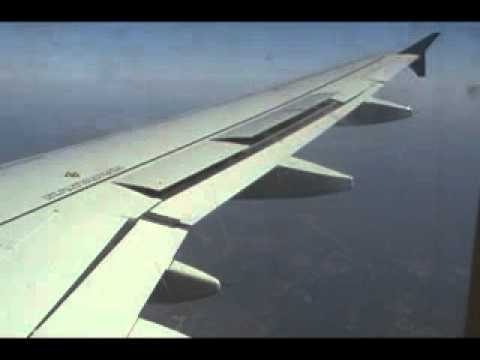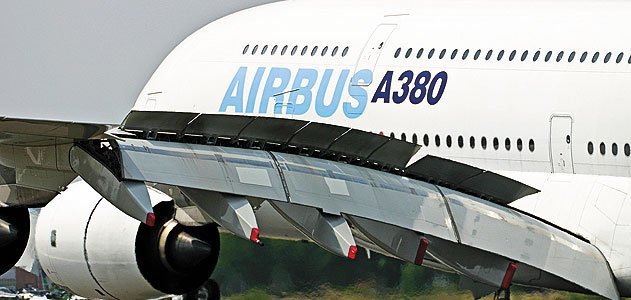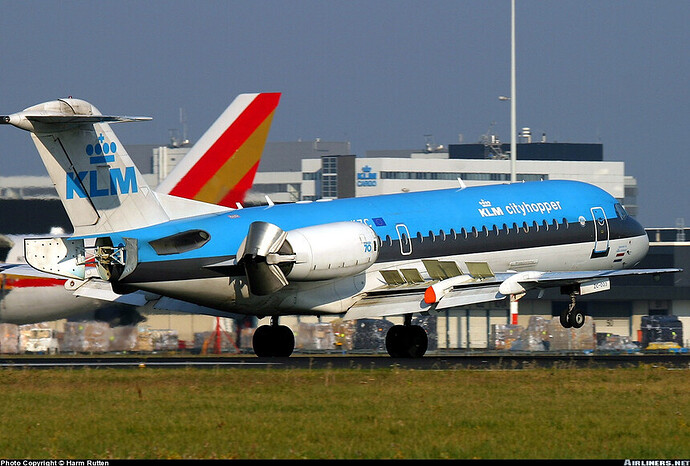Regarding the vapor coming from the vents and sidewalls, I have only seen that on the ground or in flight as a hot airplane cools. I have never seen it from a cool airplane descending into warmer, more humid air. (But then again, LAS is as close as I have come to a Dubai-like environment. Density altitude always plays a roll because you have less performance potential and higher true airspeed. But in the case of Dubai it is no worse than Denver on a 30C day. Meaning it is well, well, well within the capabilities of an overpowered 777 at max landing weight. This was an error of some sort. The only question will be: was it a crazy stupid error like Asiana or an understandable error like …take your pick, most of the rest.
Yes. It will be interesting. I’ve flown with pilots that are all ass*oles and elbows when an unexpected go-around presents itself. Hands start flying around the cockpit (for no reason) when all you really have to do is add power, hit the TOGA button, and pitch into the V-bars. Clean up after ten seconds…it isn’t something that has to be done NOW NOW NOW…! This is a situation where simulator training has actually left a negative imprint on all of us because we all know to expect the engine failure as we hit the TOGA button…so we’ve been conditioned to be scrambling due to the training. I guess the CVR and FDR will tell a lot of the story…
My airline requires us to state the entire go-around procedure–every call, every step–through “Set Clean Maneuvering Speed, After Takeoff Check” during every single approach briefing. It seems juvenile when we do it. But the idea is to normalize the actions so that they are non-events for even the weakest among us. I think this is industry standard.
We brief the entire approach and missed approach segments, even on VFR days - but we don’t actually brief the mechanics of the go-around (TOGO power, flaps takeoff and approach, positive rate, gear up, lateral nav or heading) - probably not a bad idea to at least do a quick brief on that. I’ve seen plenty of people screw that up (even I’ve been known to miss a flap up call or something in the sim)…
Always surprises me how much time professionals seem to have to do things even in an emergency situation (yes, I know there are exceptions to this).
BTW, there are some pilots on this forum. How often in your career did you need to go around? I ask because I’m not a very frequent flyer (maybe 10-15 flights per year, including 2-3 times Shanghai-Amsterdam and back again (so 4-6 flights)) - but even so I already had five go-arounds in the past 8 years. Seems a rather large number to me, on average that’s one every 16-20 flights.
BTW, all of those were in China: three times Shanghai, one time Beijing, one time Xi’an.
Well, I fly a LOT less than the average airline pilot (like 1/4 as much), so my averages won’t really be telling. And I’m just using some recollection - I’ll bet I average one go around every year. I had one a couple months ago…a non precision approach that we hit the MDA and didn’t see anything. I haven’t had a go-around due to traffic on the runway in years. The last one I had for traffic was probably a few years ago when CLT approach broke us off because we were within 4 miles of the preceding traffic without them in sight. It was a light GA plane and we couldn’t see him and they have to have 4 miles spacing unless you have a visual on the plane in front of you. If you tell them you can’t see them, they’ll break you off and box you around.
Most of my missed approaches have been on non-precision approaches though…get down to 500 or 600’ and the runway isn’t in sight so you either shoot a better approach (GPS LPV or ILS) or go somewhere else.
Personally, I think 1 out of 16-20 flights would be excessive.
I think the numbers for airline pilots were once every 3 years in a FAA article I read a while back. Although I have no idea how accurate this number was or the exact method to get to it.
These forums are so great. Really. I don’t know much about civil aviation, except from simming and gliders, so it is most interesting to see how stuff works, especially procedures.
I also think it is a good idea to train pilots excessively for emergencies (sorry pilots, I know it might be annoying), because (again, sorry!) that’s when you really need the pilot, not so much during the 95% or so of the flight when a computer is flying the airplane and everything is alright.
Oh, and I’d like to ask something:
Airliners have some sort of airbrake, don’t they?
If you decide to go-around and add (full?) power, do those brakes retract automatically?
If not, can they prevent the go-around or will the engines be powerful enough to still get the plane up again?
Most airliners actually don’t have an airbrake. The fokkers have airbrakes in the tail, it’s a split design, whereby a single hydraulic cylinder pushes apart the 2 pieces of the brake assembly that then slows the aircraft down.
Another way to brake are the ground spoilers but these can only deploy when the WOW sensors have contact(Weight On Wheels). This is a system of control surfaces that go up like a vertical piece of sheet metal into the airflow to change the form of any lift generating surfaces so that they stop generating lift. They are very effective and for obvious reason prohibited during flight.
Then there’s the flight spoilers. In a modern airliner they are a vital part to control the roll rate of the aircraft and stimulate a smooth kind of flying. The computers are constantly adjusting all the flight controls(ailerons, flight spoilers) on the wings to keep the aircraft in the heading/attitude that the pilot put it. Especially at high altitude an high speed you don’t want to use the ailerons to control the roll rate.
So in short, 3 types of systems, Ground Spoilers, Flight Spoilers, and Airbrakes, of these only the airbrakes ought to be deployed during landing since they sit at the very back and are not prone to changing the airflow. The ground spoilers are armed during the approach and auto-deploy when the wheels tough the ground. The flight spoilers are used at altitude or when you really need to make a high bank manoeuvre(they remove lift on the inner parts of the wing).
Now, let’s illustrate:
At the very tail end you see the airbrakes, then you see the thrust reversers(clamshell bucket type), and then the ground spoilers. Lovely little fokker this is.

here you can see the flight spoilers working to push the right wing down. Not very exciting, but there you go.
And finally the wonderful wing of the A380(what a beast) that has a ton of spoilers:

An interesting thing I learned about just a few days ago is that the DC-8 and Concorde were certified to use reverse thrust in the air since they were not equipped with spoilers or speedbrakes.
And the planes I fly (Citations) have speedbrakes mounted on the upper and lower inboard section of the wing that pop-out with a toggle switch. They rumble quite a bit…but are very effective. They must be retracted by 50’ prior to landing. They auto-retract if the power lever moves above the 85% N2 power setting…which can be a battle when you are trying to descend steeply in icing conditions on an arrival and are trying to keep enough heat on the wing bleed system with a high power setting. You have to use the speedbrakes to avoid overspeeding in the descent, but you also have to keep enough power in to anti-ice the wing, so you sometimes end up right on the 85% limit sucking them in and popping them out again trying to find the balance.
Several things here. All airliners have “speedbrakes” or “spoilers” (the two terms are interchangeable). A handle in the flight deck allows modulation of a limited number of panels in flight (On the tail in old Fokkers: on the wings on everything else). Those plus the rest are armed for full deployment at touchdown. One or two of the spoiler panels are interconnected with the roll controls for extra roll authority. Most airliners have an auto-stow system should “TOGA” be selected. However, mine (the 737) does not. Our mantra is “Max Power, Stow Speedbrakes!”
The clamshells behind the engines are for reverse thrust. Newer, high-bypass turbofans also have reverse thrust but do not use clamshells. In a small number of old airliners, it was approved to deploy the some or all of the clamshells for a shocking rate of descent. The older 737s allowed this.
I average about two go-arounds a year. I cannot remember the last time I went around because of inadequate cloud or visibility during an instrument approach. My go arounds are either called by ATC due to inadequate spacing with a landing plane or because we just aren’t comfy with our position. I fly with mostly new guys which might explain the higher frequency. I think they are fun, to be honest. And I try to instill that mindset in the people I fly with so that they are comfortable executing or calling a miss.
Also, international flights have a much lower incidence of go arounds because 1) they fly only between major international airports and 2) ATC tends to show some deference to wide-bodies by providing a little extra spacing both in front and behind.
That sounds right to me. And yes, they are fun because they are out of the norm. Explaining them to our flight nurses is important or you hear about the “we almost died” stories filtering back through the system a few days later. ![]()
And here I thought they were showing me some deference by not putting me too close behind them…LOL…
Ah, interesting, thank you guys!
One of my reasons to ask for that (beside the topic we are posting in now) is my plane for the Rio trip (Citation X) also has speedbrakes, and the modeler hasn’t modeled them automatically retracting (neither did he model the thrust reverse which it has IIRC). I wondered whether that is accurate.
The plane is so aerodynamic that even with engines almost at idle you can’t descend more than around 2000ft/min without getting (too) fast.
Also, be aware that aircraft manufacturers love to give special names to stuff, every single damn model comes with a new set of abbreviations for a function that is already adequately described before with a different name and abbreviation.
And my description is not a hard and fast rule, just how I’ve heard most people make a separation between the different systems and how they function.
Indeed…
Spoilers
Roll spoilers
Spoilerons
Air brakes
Speed brakes
Lift dump
Etc…etc…
Some have definite differences (spoilerons and spoilers)…but all are essentially drag making devices.
In the F-14, Direct Lift Control.
